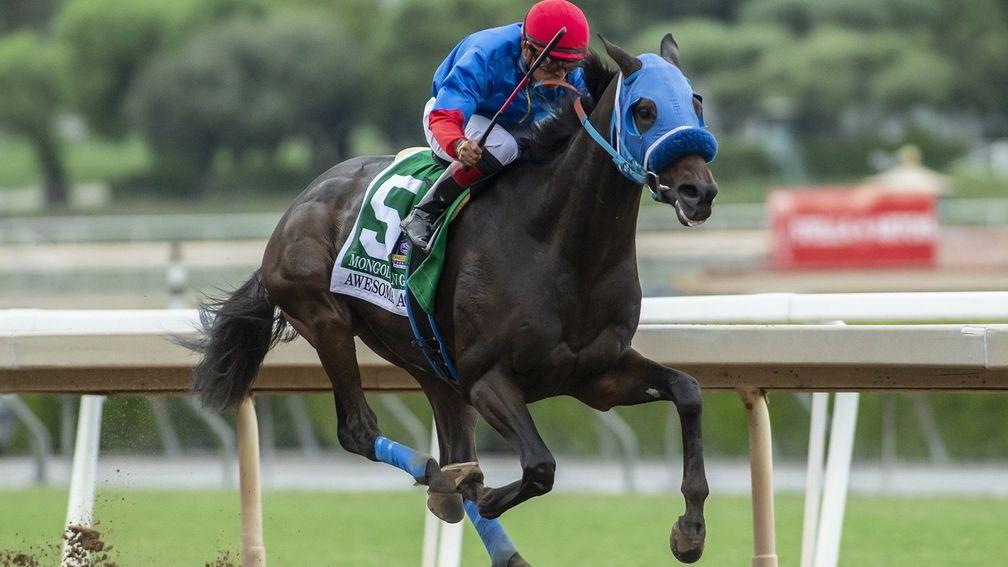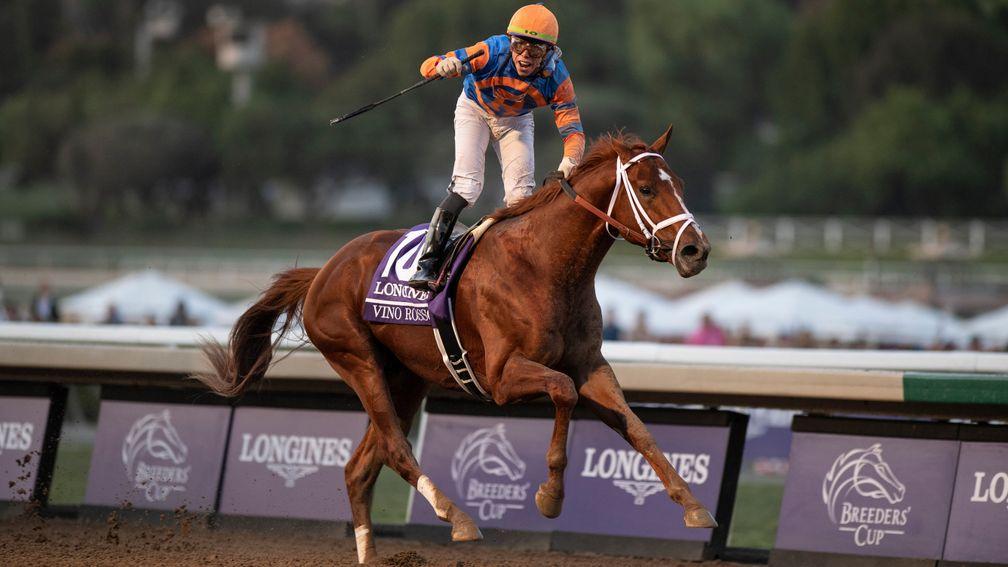Report says Mongolian Groom was lame before fatal injury in Breeders' Cup

Mongolian Groom, who suffered a fatal injury in the Breeders' Cup Classic, had lesions in both hind cannonbones when he ran, according to a report commissioned by Breeders' Cup to examine the fatality.
Leading orthopedic surgeon Dr Larry Bramlage compiled the 25-page report and concluded that Mongolian Groom had a pre-existing condition of bilateral lameness, the nature of which made it difficult to detect despite multiple pre-race exams and increased scrutiny from acting veterinary teams.
The four-year-old Mongolian Groom, a late nomination for the Breeders' Cup by his connections, was the only fatality from 229 horses that ran in the event's 14 races at Santa Anita.
"It is hard to fault a process that had a 99.6 per cent accuracy rate, but there were opportunities to remove Mongolian Groom from competition that were missed due to time constraints or process deficiencies that could be made more prominent," Bramlage wrote.
While the main track at Santa Anita underwent significant renovations after 30 horses died during the course’s winter/spring meetings, Bramlage said it is unlikely the surface played a role in Mongolian Groom's injury.
"This injury is a series of events initiated by a stress fracture within the cannonbone so small it has no outward physical signs, pain on palpation, heat, or swelling," Bramlage wrote. "Mongolian Groom was harbouring a fine stress fracture in the bottom of the [left hind] distal cannon bone.
“In fact, he had small stress fractures in both hind cannonbones. These fractures were in the depths of the bone, yet as of the start of the race had not caused any inflammation in the fetlock joint even though they were just millimetres away from the joint surface.
"A little more than one mile into the race, the left hind fracture propagated, resulting in the chain of events, like dominoes falling, that created the fatal injury."
Bramlage added: "There is no evidence the horse's injury was ignored or covered up. Mongolian Groom's form had been improving all year long. The horse had won a Grade 1 race in his last start. The horse's connections believed the horse was no different in soundness than he had been for months.”
Mongolian Groom's out of competition testing showed no prohibited substances, and the pre-race and post-injury blood sample toxicology screen showed no prohibited substances or medication overages.

Bramlage wrote: "There is no reason to believe medication played any role in the horse's injury. The problem was the stress fracture that escaped identification, but not because it or the affected joint had been treated in any fashion."
Bramlage identified six suggested process improvements aimed at refining safety and evaluation protocols for future events, including assigning vets to individual horses, a specialist area where horses are trotted up going out to and back from exercise and using all video evidence available before racing takes place.
In a statement, Breeders' Cup board chairman Fred Hertrich said: "The Breeders' Cup is committed to taking all actions to ensure our equine and human athletes compete under the safest and most transparent conditions possible.
"The Breeders' Cup board of directors appreciates Dr Bramlage's thorough evaluation and will review his recommendations for improvements to the processes that were in place for the 2019 World Championships and discuss them in detail at the next board meeting for adoption at future events."
Read The Lowdown from 8.30am daily on racingpost.com and the Racing Post app for all the day's going updates, news and tips
Published on 16 January 2020inInternational
Last updated 10:35, 16 January 2020
- OBS Spring Sale picks up steam as $1.9 million Tiz The Law filly leads the action
- Falbrav owner Luciano Salice dies at the age of 88
- Meet the Kazakh wonderhorse rising from obscurity and causing a sensation in his bid for Dubai World Cup glory
- Charlie Appleby 'still in a rebuilding process' after underwhelming 2023 - but is hopeful new generation can help him bounce back
- Dubai World Cup rides set to be pivotal in new partnership between Kieran Shoemark and Gosden stable
- OBS Spring Sale picks up steam as $1.9 million Tiz The Law filly leads the action
- Falbrav owner Luciano Salice dies at the age of 88
- Meet the Kazakh wonderhorse rising from obscurity and causing a sensation in his bid for Dubai World Cup glory
- Charlie Appleby 'still in a rebuilding process' after underwhelming 2023 - but is hopeful new generation can help him bounce back
- Dubai World Cup rides set to be pivotal in new partnership between Kieran Shoemark and Gosden stable